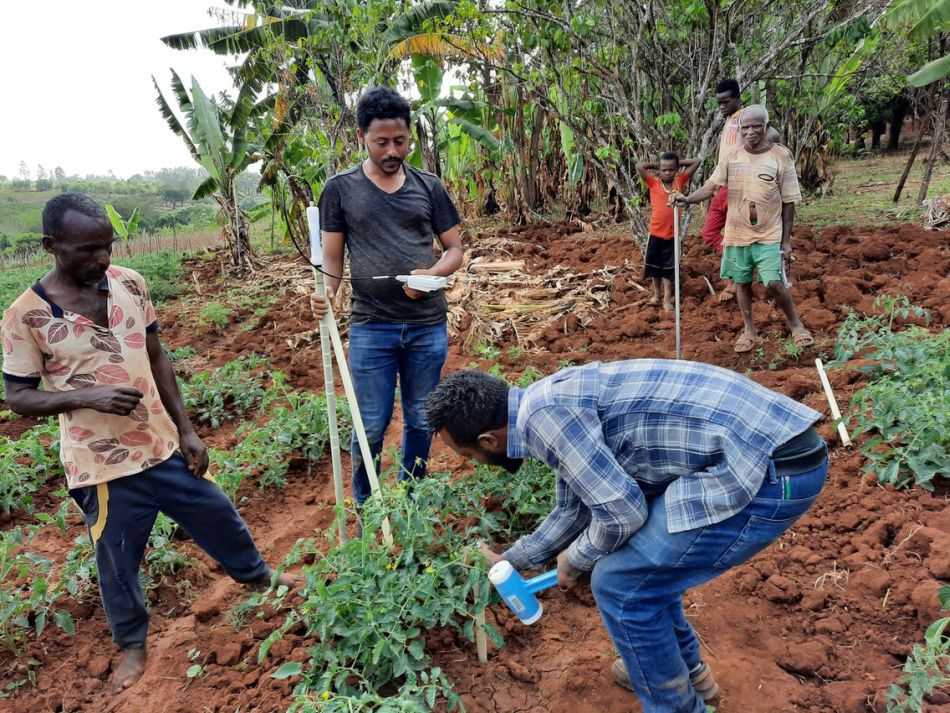The irrigation area in the Nile Basin is projected to increase by more than 50 percent by 2050 under a “business-as-usual” scenario according to a recent study conducted by researchers from the International Water Management Institute (IWMI) in association with the Nile Basin Initiative Secretariat. However, research has shown that there will be considerable water availability shortfalls in the Nile Basin if all proposed agricultural crop expansion is to be irrigated from the Nile or its tributaries.

This study reviewed the national master plans or other planning documents of each Nile Basin country to project how much land might be under irrigation in 2030 and 2050. Countries of the Nile Basin can then use these projections in their further development of national plans to develop sustainable options that meet their growing water needs.
Almost all Nile Basin countries plan to expand irrigation to enhance food security and foster economic growth and transformation – but for different reasons and by different means. “For example, some countries are focused on improving productivity and water-use efficiency of existing irrigated area rather than expansion of irrigated land,” said Amare Haileslassie, a principal researcher at IWMI and co-author of the study. “Other countries show renewed interest in irrigation expansion.”
The study analysed two irrigation expansion scenarios: a Business-as-Usual Scenario (BaUScen) and a Planned Development Scenario (PLANScen). These scenarios were developed in consultation with water resources management specialists and irrigation experts from the Nile Basin countries. The scenarios represent how irrigated agriculture is going to evolve in the Nile Basin countries. They were used to evaluate the likely impacts of increased water abstractions for irrigation on the water resources of the Nile Basin system.
The BaUScen Scenario assumes that the historical irrigation development trend in each basin country will continue till 2050. The long-term average rate of irrigation area expansion has been used to develop projection of future irrigation areas in the Nile Basin countries.
Under the BaUScen, the study concludes that the current basin irrigation area of 6.6 million hectares will be expanded to 8.9 million hectares by 2030 and 10.8 million hectares by 2050 – a 64 percent increase. Haileslassie explained that this is the “rapid irrigation growth scenario” relative to the other scenarios. It represents the recent ambitious irrigation expansion plans particularly in many upstream countries.
The second scenario, PLANScen, assumes that most of the Nile Basin countries have developed irrigation master plans or have conducted integrated water resources management studies or developed some form of a strategic development. It’s different from the BaUScen in that it is based on a country’s inventory of resources and is a reflection of each country’s national policy ambition, including food security. The full implementation of PLANScen would give the second highest possible expansion of irrigation area. Under this scenario the current 6.6 million hectares would be extended to 8.3 million hectares by 2030 and 10.0 million hectares by 2050, which is within the limits of both potential irrigation area boundaries at the regional scale.
The results of the study now need to be systematically evaluated using modeling with and without considering the proposed water-saving scenarios. First, the results of the four variants of the two projection scenarios will be evaluated without considering a proposed water-saving scenario. The water deficit will be assessed at the country level and on a regional scale. Next, each variant of the projected areas will be run under different proposed scenarios. Based on the final assessment and synthesis, strategic policy recommendations that will serve the Nile Basin countries will be developed and presented to the stakeholders.
“This study will contribute to sustainable and efficient investment planning to meet the growing water demands of the people of the Nile Basin,” said Haileslassie. “The projections presented in the study will help in developing options for water savings in agriculture, such as the adoption of improved irrigation technologies and optimization of cropping patterns across the basin… all of which can lead to ensuring there will be sufficient water resources well into the future across the Nile Basin.”
This study forms part of the Support to transboundary water cooperation in the Nile Basin project, which is being implemented by IWMI and the Nile Basin Initiative and is supported by GIZ, on behalf of the European Union and German Federal Government. The study’s contents are the sole responsibility of the implementing organizations and do not necessarily reflect the views of the European Union, the German Federal Government, or the Nile riparian countries.
Donor: This project is funded by the German Federal Ministry for Economic Cooperation and Development (BMZ) commissioned by the Deutsche Gesellschaft für Internationale Zusammenarbeit (GIZ) through the Fund International Agricultural Research (FIA). Additional support was provided from the CGIAR Research Program on Water Land and Ecosystems (WLE).
Contact: Dr. Michael Kizza; Dr. Abdulkarim Seid; Dr. Amare Haileslassie.

